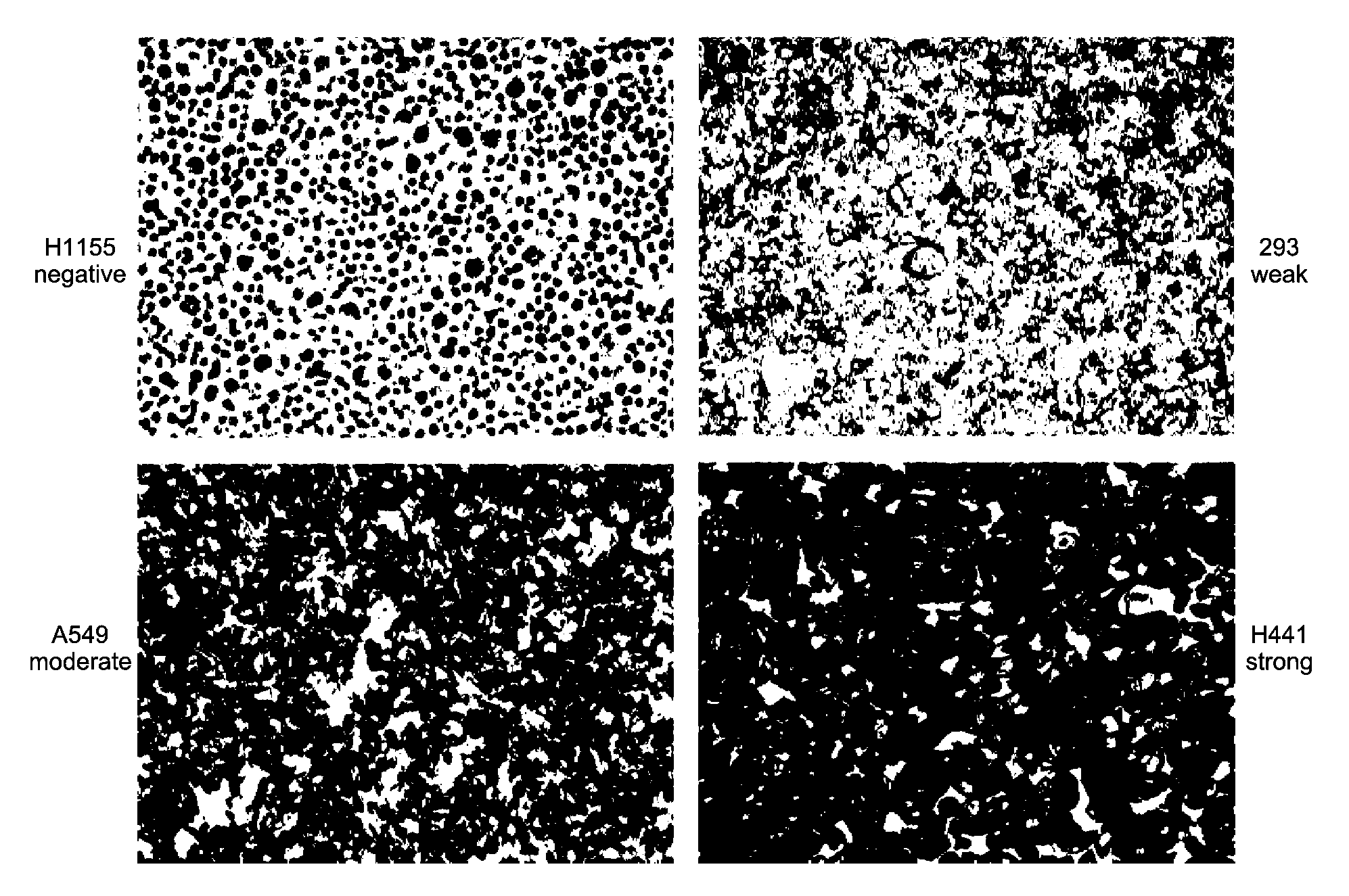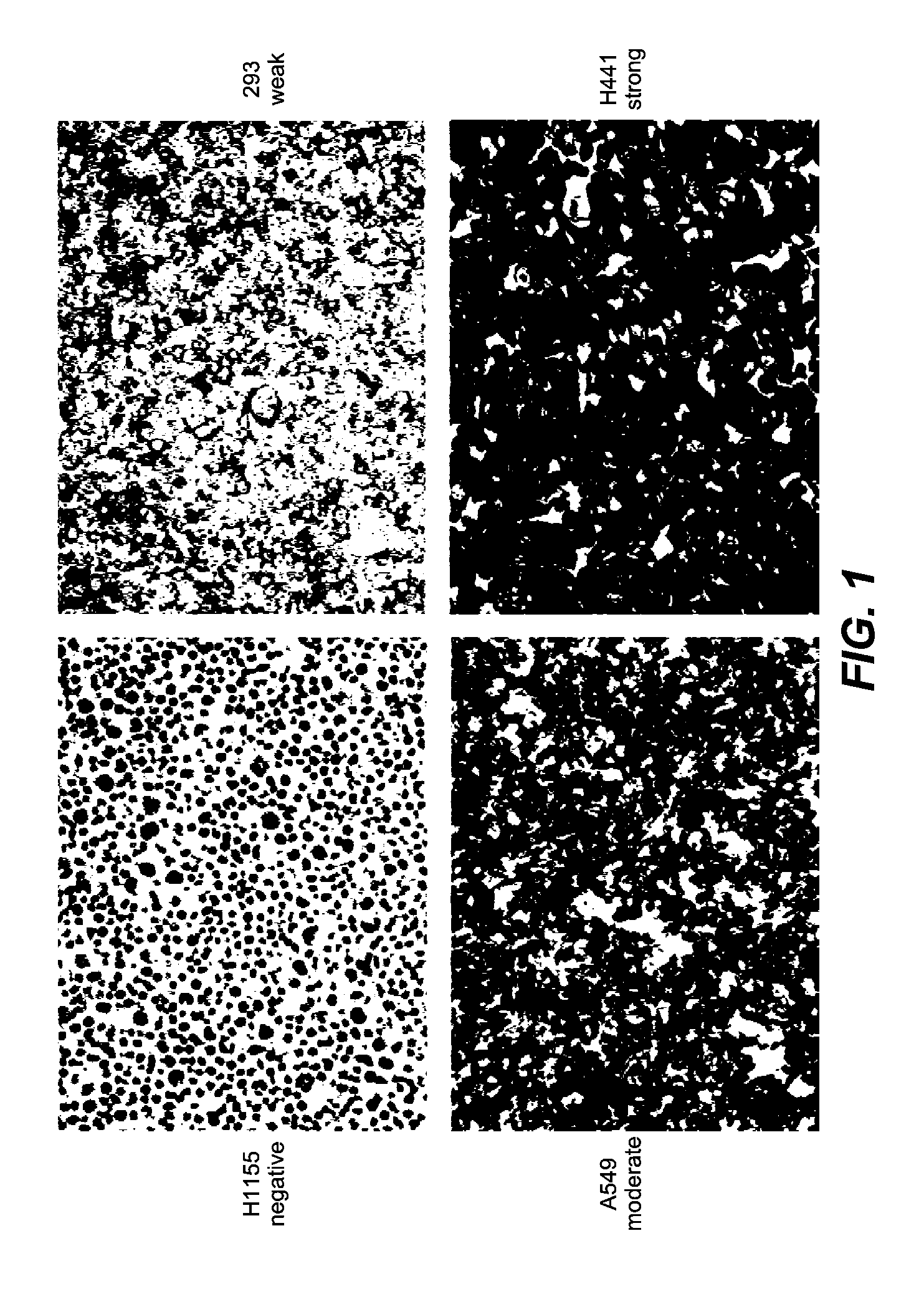Biomarkers and methods of treatment
a biomarker and cancer technology, applied in the field of cancer biomarkers, can solve the problems of increasing the risk of cancer progression and death in patients with nsclc, increasing the risk of nsclc progression and death, and approximately double the risk of death in patients with high c-met biomarkers. to achieve the effect of effectively treating cancer patients and increasing the risk of cancer progression and death
- Summary
- Abstract
- Description
- Claims
- Application Information
AI Technical Summary
Benefits of technology
Problems solved by technology
Method used
Image
Examples
examples
Materials and Methods
[0307]Samples: Pretreatment patient samples were analyzed from a blind, Phase II, randomized, multicenter trial (further described below) designed to evaluate preliminary activity and safety of treatment with MetMAb plus erlotinib versus erlotinib plus placebo in NSCLC. Submission of either a formalin-fixed paraffin-embedded tumor specimens or unstained paraffin slides (15 slides) of representative tumor was required for all patients enrolled into the study.
[0308]Immunohistochemistry (IHC): Formalin-fixed, paraffin-embedded tissue sections were deparaffinized prior to antigen retrieval, blocking and incubation with primary anti-c-Met antibodies. Following incubation with secondary antibody and enzymatic color development, sections were counterstained and dehydrated in series of alcohols and xylenes before coverslipping.
[0309]The following protocol was used for IHC. The Ventana Benchmark XT system was used to perform c-met IHC staining using the following reagent...
PUM
| Property | Measurement | Unit |
|---|---|---|
| dissociation constant | aaaaa | aaaaa |
| time | aaaaa | aaaaa |
| time | aaaaa | aaaaa |
Abstract
Description
Claims
Application Information
 Login to View More
Login to View More - R&D
- Intellectual Property
- Life Sciences
- Materials
- Tech Scout
- Unparalleled Data Quality
- Higher Quality Content
- 60% Fewer Hallucinations
Browse by: Latest US Patents, China's latest patents, Technical Efficacy Thesaurus, Application Domain, Technology Topic, Popular Technical Reports.
© 2025 PatSnap. All rights reserved.Legal|Privacy policy|Modern Slavery Act Transparency Statement|Sitemap|About US| Contact US: help@patsnap.com



